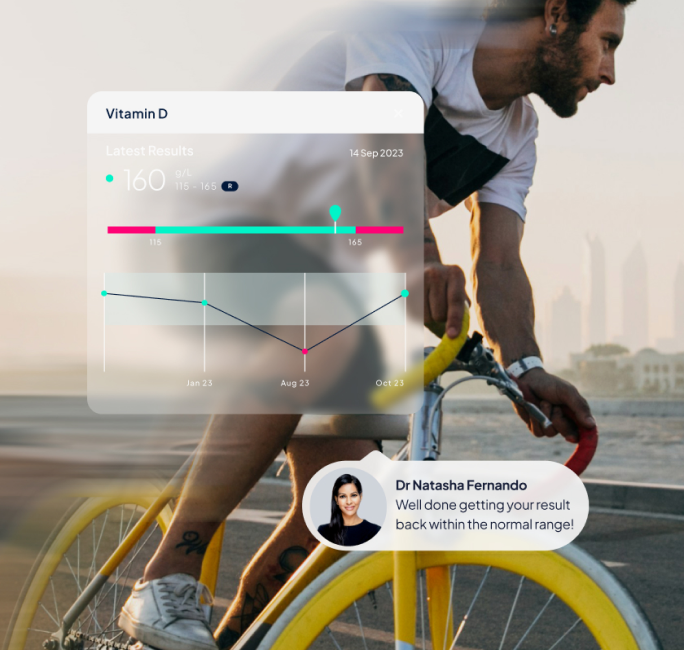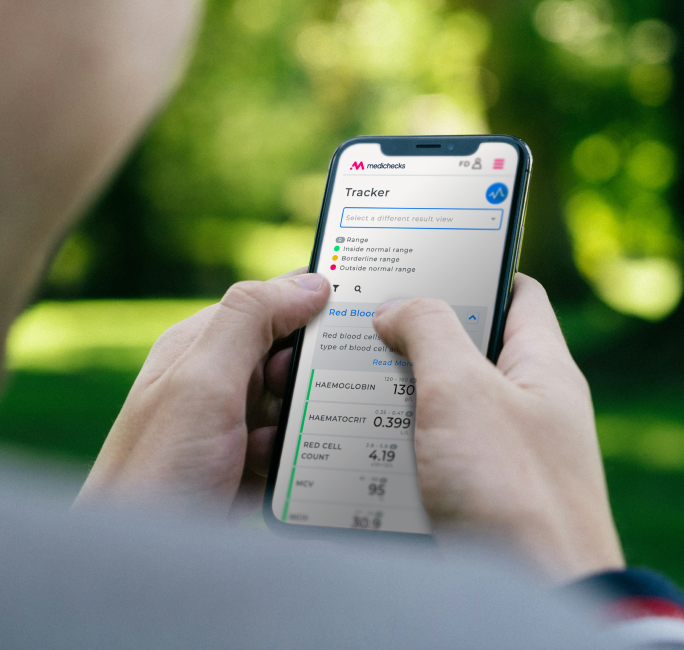Monitor your hormone levels with our TRT hormone monitoring profile, which includes free testosterone, oestradiol, and prolactin, to ensure your treatment stays on track.




TRT with Free Testosterone Blood Test
- Results estimated in 2 working days
- Convenient testing options
- Bespoke doctor’s report
- Free delivery
Looking for an upgrade? Why not check out our Advanced TRT Blood Test.
How do you want to take your sample?
Please choose one option below-
Book a venous draw at a clinic Venous+£35Visit one of our national clinic partners for a nurse to take your venous blood sample from a vein in your arm. We’ll email you instructions on how to book after we’ve processed your order.
-
Book a venous draw at home with a nurse Venous+£59Book a home nurse appointment for a nurse to take your venous blood sample from a vein in your arm.
-
Self-arrange a professional sample collection VenousFreeMake an appointment at a phlebotomy clinic to have your venous blood sample taken. You will be responsible for arranging your appointment and any additional fees.
18+ Only. T&Cs apply.
Find your nearest clinic

Go beyond the numbers
Get ready to elevate your health understanding with a personalised doctor's report. Go beyond results and tap into expert insights tailored just for you.
- Actionable advice
- Expert support
- Tailored recommendations

How it works
You have the flexibility to choose what works best for you. Enjoy the comfort of having a friendly nurse visit your home for a quick blood draw, opt for a convenient visit to one of our nationwide partner clinics, or self-arrange a draw at a location that suits you.
Take control of your health with Medichecks – order your blood test today!

Track, improve, and monitor your health over time.
MyMedichecks is your personal online dashboard where you can view your results, access clear and simple explanations about individual health markers, monitor changes in your health, and securely store information about your medical history, lifestyle and vital statistics.
Supported by a team of specialist and qualified doctors
Dr Natasha Fernando
Medical DirectorDr Tina Ghela
Digital Clinician LeadDr Susanna Hayter
Digital Clinician
What's in the test?
Hormones
Oestradiol
Learn more
Oestradiol is the strongest of the three oestrogens. It's labelled a female hormone but it's made in both the ovaries and testes. It's responsible for the growth of breast tissue, the female reproductive system, and male sexual function.
In pre-menopausal women, oestradiol levels vary throughout the monthly cycle, peaking just before ovulation. Levels are lowest after menopause when the ovaries stop producing eggs. Low oestradiol levels in women can cause many symptoms associated with the menopause, including hot flushes, night sweats, and changes in mood. It can also increase the risk of osteoporosis (a condition where the bones become less dense).
In men, oestradiol levels tend to increase slightly with age as testosterone levels decline. Too much oestradiol in men can contribute to fertility problems, gynecomastia (enlarged breast tissue), and erectile dysfunction.
Testosterone
Learn more
Free testosterone - calc
Learn more
Prolactin
Learn more
Proteins
Albumin
Learn more
SHBG
Learn more
How to prepare for your test
Prepare for your TRT with Free Testosterone Blood Test by following these instructions. Take your sample between 6am and 10am. Avoid vigorous exercise or sexual activity for 48 hours beforehand – both can raise your prolactin level. Avoid nipple stimulation or heavy meals before taking the test, as these can increase prolactin levels. Do not take biotin supplements for two days before this test, discuss this with your doctor if it is prescribed.
Test limitations
Reviews
FAQs
What can I learn from a TRT with free testosterone test?
Our test includes total testosterone and a calculation of the amount of free or unbound testosterone that is available to your tissues. Most testosterone in your body is bound to proteins (sex hormone-binding globulin and albumin) and is unavailable to your cells. By measuring your total testosterone and your levels of SHBG and albumin, the laboratory can calculate your free testosterone level. If you have high levels of SHBG, your free testosterone will be lower, even when your total testosterone is normal.
Why check free testosterone and female hormones?
Low free testosterone can cause low libido, lack of muscle mass, and low mood. It is also important to check the levels of female hormones in your blood if you are taking TRT. High testosterone levels can also cause high oestradiol, especially if you are experiencing symptoms associated with high oestradiol (including the growth of breast tissue and low libido).
Who is a TRT with free testosterone test for?
Our TRT with Free Testosterone Blood Test profile is for men taking testosterone replacement therapy (TRT) who want to monitor their male and female hormones. Monitoring your hormone levels allows you and your practitioner to optimise your dose of testosterone replacement. This test is also useful if you are experiencing symptoms of low testosterone yet your total testosterone level is normal, and you want to measure your free testosterone as the next step.
